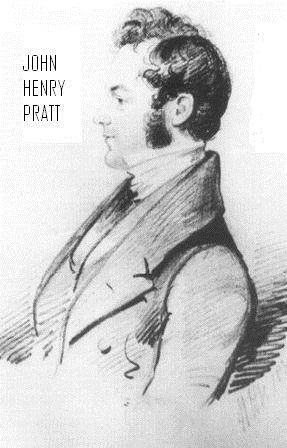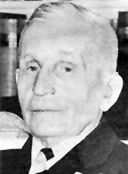<Back to Index>
- Mathematical Physicist John Henry Pratt, 1809
- Geodecist Veikko Aleksanteri Heiskanen, 1895
PAGE SPONSOR

John Henry Pratt (4 June 1809 - 28 December 1871) was a British clergyman and mathematician who devised a theory of crustal balance which would become the basis for the isostasy principle.
He was the second son, born in London, of Josiah Pratt. He graduated B.A. from Caius College, Cambridge, as third wrangler in 1833, was elected to a fellowship there, and proceeded M.A. in 1836.
He was appointed a chaplain of the East India Company, through the influence of Bishop Daniel Wilson, in 1838. He became Wilson's domestic chaplain, and was in 1850 appointed archdeacon of Calcutta. He died in Ghazipur, India, on 28 December 1871. At the instance of Bishop Milman, a memorial to Pratt was erected in Calcutta Cathedral.
Pratt was the author of ‘Mathematical Principles of Mechanical Philosophy’ (1836), subsequently expanded and renamed ‘On Attractions, Laplace's Functions and the Figure of the Earth’ (1860, 1861, and 1865). This work, known as Pratt's Mechanical Philosophy, had full title: The Mathematical Principles of Mechanical Philosophy and their application to Elementary Mechanics and Architecture, but chiefly to The Theory of Universal Gravitation, a textbook of some 600 pages. While serving as archdeacon, Pratt arrived at his theory of crustal balance, based on a survey of India.
He also published a small work entitled ‘Scripture and Science not at Variance’ (1856), which went through numerous editions; and, in 1865, edited from his father's manuscript ‘Eclectic Notes, or Notes of Discussion on Religious Topics at the Meetings of the Eclectic Society, London, during the years 1798 – 1814.

Veikko Aleksanteri Heiskanen (23 July 1895, Kangaslampi – 23 October 1971, Helsinki) was a famous Finnish geodesist.
He is mostly known for his refinement of the theory of isostasy by George Airy and for his studies of the global geoid.
- 1931 - 1949 Professor of Geodesy, Helsinki University of Technology;
- 1933 - 1936 Member of Finnish Parliament;
- 1949 - 1961 Director, Finnish Geodetic Institute;
- 1951 - 1961 Research professor, Ohio State University.